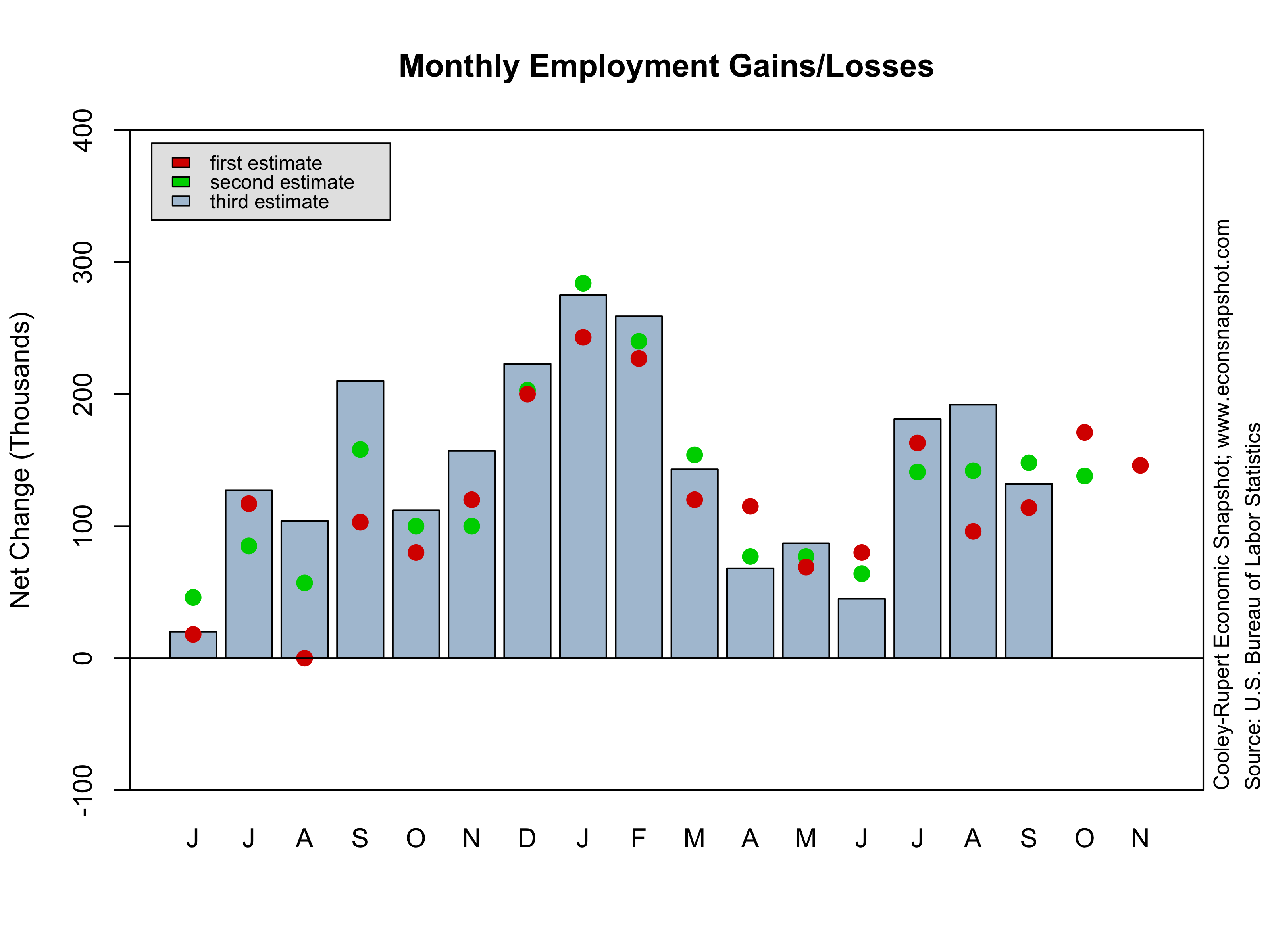The BEA released the third estimate of GDP and its components, showing real GDP increasing 3.1% for the third quarter–the second estimate came in at 2.7% and the advance estimate at 2.0%. The increase was higher than consensus expectations. As we stated in an earlier post though, you may want to keep the celebration in check. Although final sales perked up, 2.4% in Q3 compared to 1.7% in Q2, and residential investment increased 13.5%, nonresidential structures investment was flat, 0%, and equipment and software investment was down -2.6%. In fact, the overall trend in nonresidential investment over the last year is a significant cause for concern. It also coincides with the slowdown in employment growth.
Federal Government spending was revised up to 3.9%, from a previous 3.5% in the second estimate. The major part of the increase was driven by a large 9.5% increase in Federal Government spending and a big part of that was defense spending: National defense spending rose 12.9%. Overall, the increased Federal spending accounted for .75 percentage points of the 3.1% growth in real GDP, and Personal Consumption expenditures accounted for about 1/3 of the increase, 1.12 percentage points . Note that the government spending increase was the first increase in 8 quarters. The last time government spending fell for 8 consecutive quarters was the unwinding of the Korean War, from 1953:Q3 to 1955:Q2.
Overall, it appears that consumption growth remains sluggish and fixed investment can not get its act together–especially business fixed investment. Concerns throughout the rest of the world appear to have generated a decline in trade overall, although exports were up 1.9%, imports fell, -0.6%.
Continue reading “Q3 GDP Revised UP, Some Troubling Areas Remain”





